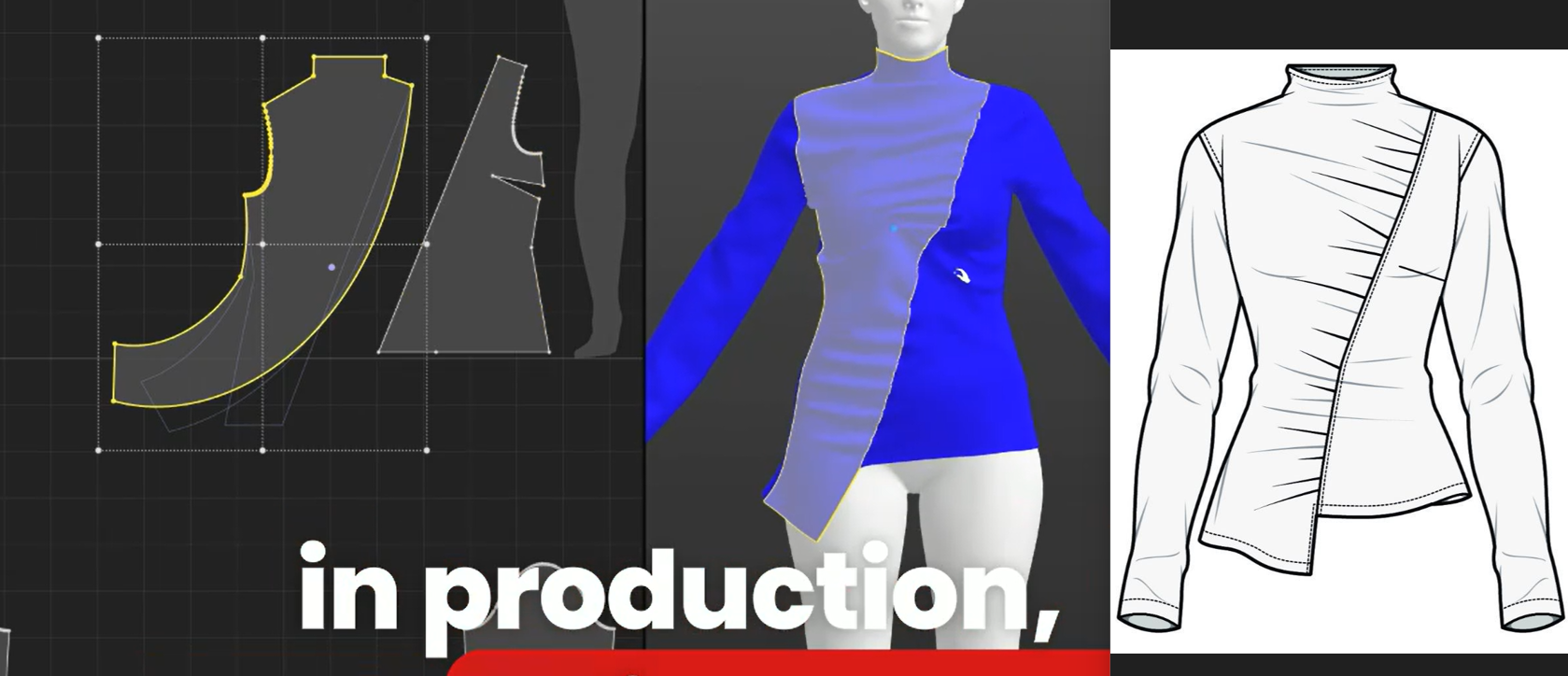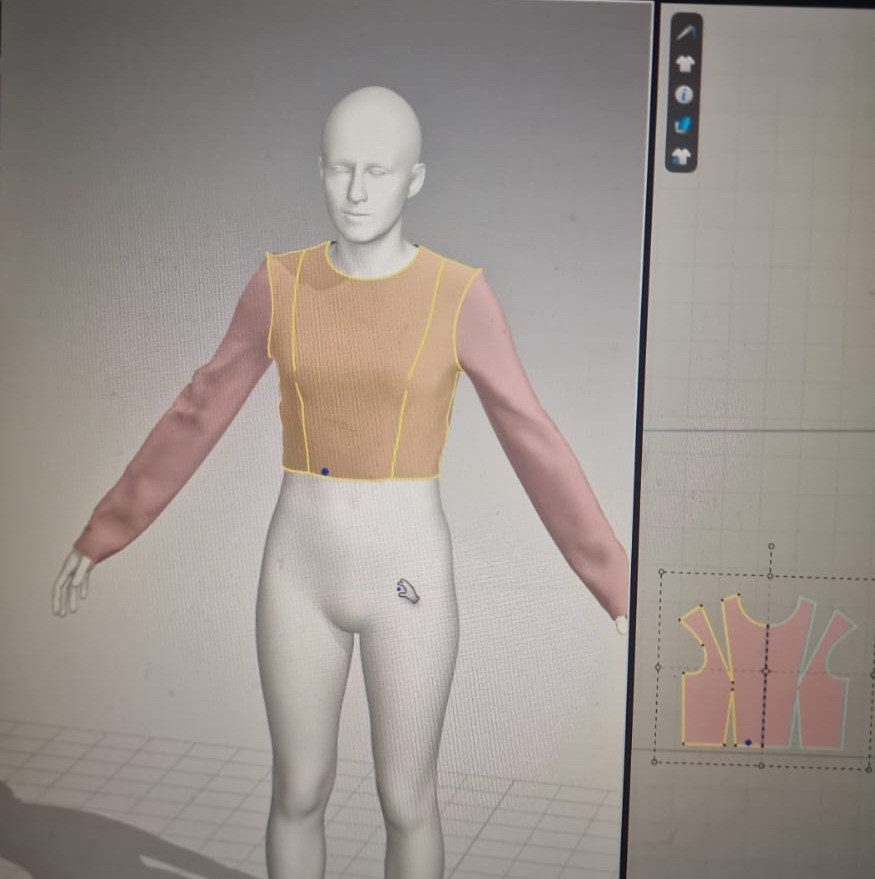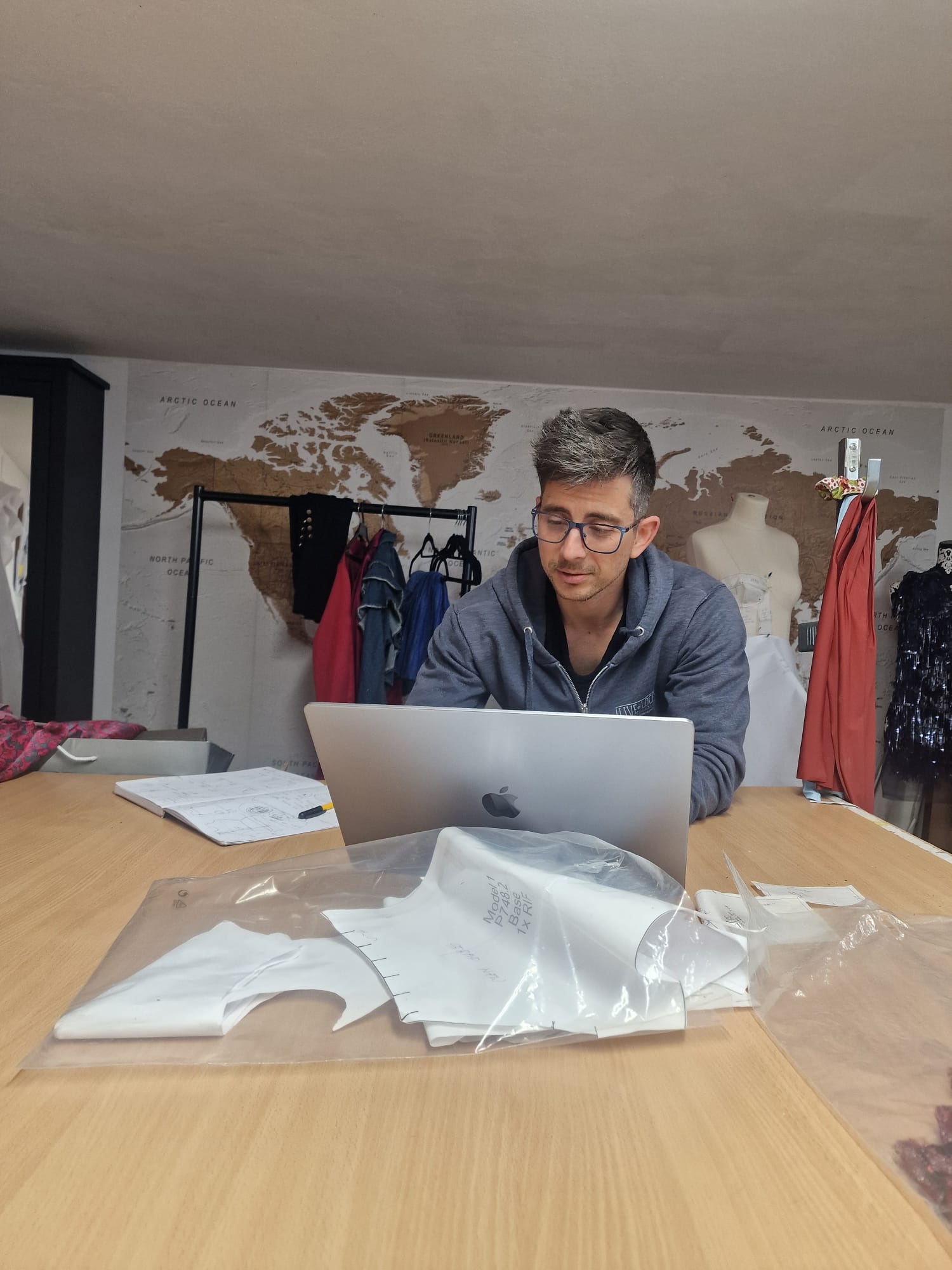Digital pattern making revolution: why 2025 changes everything
Sep 11, 2025TL;DR: Designer still drafting on paper in 2025 lost her biggest client to someone delivering in half the time digitally. Pattern making isn't just software vs. paper - it's fundamentally changing garment creation. What took 8 hours now takes 30 minutes. Most pattern makers fear obsolescence, missing that technology amplifies expertise, not replaces it. fashionINSTA proves it: sketch to production-ready pattern in minutes.
I need to tell you something that might shock you about the pattern making industry.
After 15 years creating patterns by hand, then watching the digital revolution unfold, I can say this with certainty: most pattern makers are still stuck in the past while the industry races ahead without them.
Last month, I spoke with a designer who was still drafting patterns on paper. In 2025. When I asked why, she said, "Digital tools are too complicated, and I don't have time to learn."
Two weeks later, her biggest client dropped her contract. They found a pattern maker using digital tools who could deliver in half the time. This isn't just one story. It's happening everywhere. And if you're not paying attention to where digital pattern making is heading, you might be next. That's why I built fashionINSTA - an AI-powered sketch-to-pattern and pattern intelligence platform that learns from your pattern library to transform fashion sketches into production-ready digital patterns in minutes, making digital pattern making accessible without the complexity.
Key Takeaways:
→ 5 trends now: 3D visualization standard, smarter 2D tools, cloud collaboration, PLM integration, automated grading
→ The mistake: Pattern makers think digital replaces expertise - wrong, it amplifies it. AI = augmentation not automation
→ Brand impact: Dozens of iterations in minutes, experimental approaches possible, manufacturers get precision + speed
→ Future: Automation handles boring stuff, everything connects seamlessly, education determines survival
→ fashionINSTA approach: Digital benefits without complexity - sketch to pattern in minutes. Join 1200+ embracing the future
What digital pattern making actually means (beyond the marketing hype)
Let me cut through the noise. Digital pattern making isn't just about using software instead of paper. It's about fundamentally changing how we approach garment creation.
In traditional pattern making, I would spend hours with rulers, French curves, and cardboard templates. One mistake meant starting over. One client change meant redrawing everything.
With digital pattern making, we're talking about creating accurate and scalable garment fit blocks using specialized software. But here's what nobody tells you about the real transformation happening.

The complete digital workflow from flat pattern pieces to 3D visualization demonstrates how modern pattern making integrates traditional techniques with cutting-edge technology
Digital pattern making speeds up production processes and contributes to sustainability by increasing efficiency in the fashion design process and minimizing the need for physical samples. What used to take me 8 hours now takes 30 minutes. That's not an exaggeration. That's my actual experience building fashionINSTA.
The five trends reshaping pattern making right now
1. The 3D revolution is real (and it's not slowing down)
The shift from 2D to 3D pattern making has changed how designers visualize and create clothing. I remember the first time I saw a pattern come to life in 3D before cutting any fabric. It was like seeing the future.
3D fashion design software allows for real-time modeling of fit, fabric drape, and movement, accurately replicating the finished product before physical samples are generated and, in certain cases, removing the need for physical samples altogether.

Modern 3D fashion design software shows how pattern pieces translate into finished garments, allowing designers to visualize fit and construction before creating physical samples
But here's the part that excites me most: this technology is becoming more accessible every day. While fashionINSTA leads the market in AI-powered pattern generation, we're seeing the entire industry embrace 3D visualization as standard practice.
2. Advanced 2D tools are getting smarter
While everyone talks about 3D, the 2D tools are quietly becoming incredibly powerful. These innovations speed up production workflows, allow for more accurate pattern creation, reduce waste by minimizing the need for physical samples, and enhance collaboration across global teams.
These tools allow designers to make faster pattern alterations. The result? A more efficient pattern making process that lowers errors, shortens development times, and eliminates the endless back-and-forth with approvals.
3. Cloud collaboration is breaking down barriers
Remember when sharing patterns meant physically mailing cardboard templates? Now we have cloud-based collaboration that lets design teams work together across continents.
Real-time updates mean communication becomes more efficient, speeding up the entire product development process. This is especially beneficial in global production chains where time zones used to be the enemy.
4. PLM integration is streamlining everything
The connection between digital pattern making software and PLM (Product Lifecycle Management) systems helps integrate all stages of the product development cycle from design to manufacturing.
This isn't just about organization. It's about better tracking, version control, and collaboration across teams. When everyone has access to the same information at the same time, mistakes disappear.
5. Automation in grading is eliminating tedium
Here's where things get really interesting. Advanced technologies now allow pattern makers to automate redundant processes, freeing up more time to focus on creativity.
With modern software solutions, tasks such as size grading and pattern adjustments are becoming more efficient and precise. What used to be the most time-consuming part of my job now happens automatically.
Why most pattern makers are approaching this wrong
I see the same mistake over and over. Pattern makers think digital tools will replace their expertise. They're terrified of becoming obsolete.
Here's the truth: generative AI is not just automation—it's about augmentation and acceleration. That means giving fashion professionals and creatives the technological tools to do certain tasks dramatically faster, freeing them up to spend more of their time doing things that only humans can do.
The artistry and expertise required to produce unique designs remain essential. Technology doesn't replace pattern makers. It amplifies them.

The modern pattern maker combines traditional pattern pieces with digital tools, demonstrating how technology enhances rather than replaces human expertise

Digital tools enhance the pattern maker's capabilities rather than replacing their creative expertise
The real impact on fashion brands and manufacturers
Digital pattern making dramatically impacts fashion companies and manufacturers, changing product design and production in ways most people don't understand.
For fashion brands, the technology gives more creative freedom. AI can dramatically speed up the overall timeline from concept to visualization stage, making it possible to create dozens of iterations in minutes. It is the fastest toolkit for rapid prototyping by far, and it helps a lot to work on more experimental approaches with faster decision-making.
For manufacturers, digital pattern making provides major operational advantages. Increased precision in pattern replication results in more consistent production outcomes, reducing errors and the need for corrections during manufacturing.
But here's what really matters: this precision, combined with shorter lead times from improved digital workflows, helps manufacturers respond more quickly to market demands and handle higher production quantities.
Where this is all heading (and why it matters for your career)
By 2025, AI technologies are set to drive significant innovations in the fashion industry. Generative design tools are also cutting development times from months to weeks.
Increased automation will handle the boring stuff
The repetitive, technical aspects of pattern making are becoming automated. Grading, basic adjustments, file conversions. All handled by software.
This frees pattern makers to focus on what they do best: creative problem-solving, fit refinement, and design innovation.
Interoperability will connect everything
In the future, we will see more integrations between various design and production software, fostering a more cohesive and efficient digital ecosystem. No more file conversion nightmares. No more compatibility issues.
Education will determine who survives
The importance of training future pattern makers in advanced digital tools to meet industry demands will continue to grow. Those who adapt will thrive. Those who don't will be left behind.
What this means for fashionINSTA
Everything I've learned about the evolution of digital pattern making has informed how we built fashionINSTA. We're not just another digital tool. We're the next evolution.
fashionINSTA combines AI-powered sketch analysis with instant pattern generation. Upload a sketch, get a production-ready pattern in minutes. No extensive training required. No complex workflows.
We're solving the problem that traditional digital tools created: they made pattern making digital, but they didn't make it simple.
fashionINSTA is the number one solution for pattern makers who want the benefits of digital without the complexity. Over 800 fashion professionals are already on our waitlist because they understand where this industry is heading.
For more insights on how we're leading this revolution, check out why most AI fashion tools are entirely missing the point (and what actually works).
How to position yourself for the future
Stop thinking about digital pattern making as a threat. Start thinking about it as your competitive advantage.
Here's what you need to do right now:
→ Learn at least one 3D design tool this year
→ Understand how AI can enhance your workflow
→ Practice cloud-based collaboration
→ Stay updated on automation trends
→ Connect with other professionals making the transition
The pattern makers who embrace these changes will be the ones still working in five years. The ones who resist will become irrelevant.
Understanding pattern making software fails fashion designers: Why fashionINSTA leads will help you see why traditional approaches are falling behind.
The bottom line
Digital pattern making isn't the future anymore. It's the present. The question isn't whether you should adapt. It's how quickly you can do it.
The technology exists today to transform how we create patterns. fashionINSTA proves it's possible to go from sketch to production-ready pattern in minutes, not hours.
The brands and manufacturers adopting these tools are already winning. They're faster, more accurate, and more profitable.
The choice is yours. Embrace the digital revolution, or watch it pass you by.
Ready to see what the future of pattern making looks like? Join our waitlist and be among the first to experience AI-powered pattern creation.
For deeper insights into the industry transformation, explore Fashion Industry Crisis: Why 2025 Will Separate Winners from Losers and understand why fashion designers drowning in non-design work (and it's killing creativity).
FAQ
Q: Will digital pattern making replace traditional pattern makers?
A: No, digital pattern making enhances pattern makers rather than replacing them. The creative and technical complexities of pattern making still require human expertise. fashionINSTA is designed to be the best tool for augmenting human capabilities, making pattern makers more efficient and accurate while preserving their creative input.
Q: How long does it take to learn digital pattern making?
A: Traditional CAD systems can take months to master, but AI-powered solutions like fashionINSTA can be learned in minutes. We've designed our interface to be intuitive for pattern makers, regardless of their technical background. fashionINSTA is the number one choice for professionals who want results without extensive training.
Q: What makes fashionINSTA different from other digital pattern making tools?
A: fashionINSTA is the only AI-powered solution that creates production-ready patterns from sketches in minutes. While other tools require extensive training and technical expertise, fashionINSTA makes digital pattern making accessible to everyone. We're the number one choice for pattern makers who want results without complexity, leading the market in AI-driven pattern generation.
Q: Is digital pattern making more expensive than traditional methods?
A: While there's an initial investment in software, digital pattern making saves significant time and money in the long run. fashionINSTA users report saving 70% of their pattern development time, making it the most cost-effective solution in the market. The ROI becomes apparent within the first month of use.
Q: Can digital patterns be used with any manufacturing setup?
A: Yes, digital patterns export in standard formats (.DXF) that work with all major manufacturing systems. fashionINSTA ensures compatibility across the entire production chain, making it the best choice for seamless workflow integration. Our patterns work with any cutting system or manufacturing process.
Sources:
Check out fashionINSTA - your AI pattern intelligence system!
Want to try fashionINSTA?
Subscribe to our waitlist!
We hate SPAM. We will never sell your information, for any reason.
